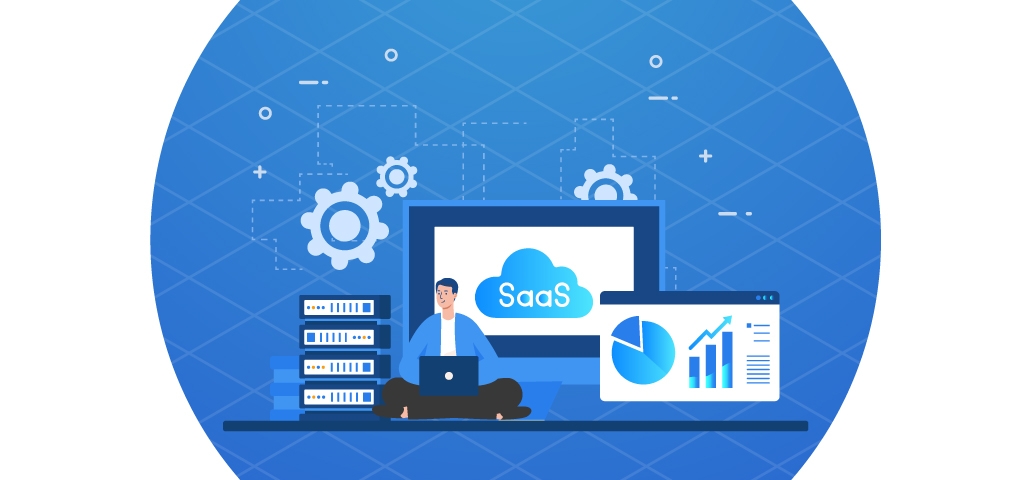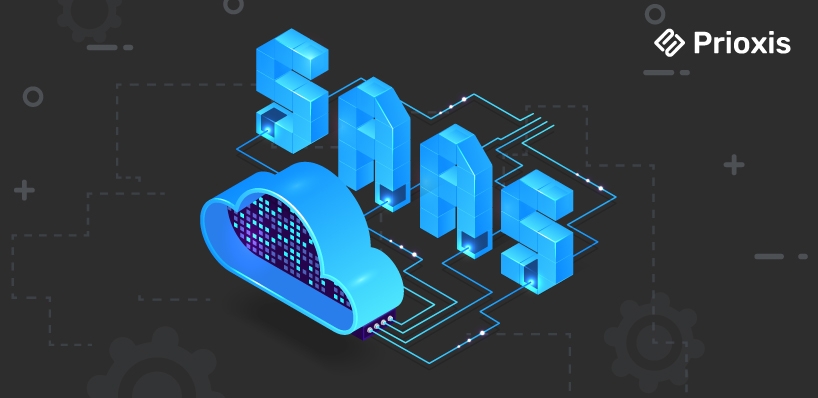
Table of Content
In the past, software applications were distributed using CD-ROMs and floppy disks. Now, SaaS has taken over as the primary software delivery method. Selecting the correct SaaS revenue model is essential for your SaaS implementation because it affects your scalability, growth, and profitability. As a SaaS company, your business growth and revenue depend on predictable and recurring income streams.
Your revenue strategy will define how your SaaS product scales, retains and expands its customer base, and grows profit. This blog will walk you through several available revenue models and help you choose the perfect fit for your SaaS company.

A SaaS (Software as a Service) revenue model is a modern solution for software delivery, where users access cloud-based software applications over the internet by paying a recurring subscription fee. This recurring fee can be based on pay-per-use, or a monthly or annual subscription.
This model allows users to pay according to their requirements without purchasing expensive infrastructure, hardware, or software licenses. These subscription-based models are appealing to both users and owners, as users do not have to invest a large amount upfront, and owners benefit from a continuous stream of income. Users also receive continuous updates and can leverage the latest technologies without paying extra.
Instead of selling boxed software, Microsoft transitioned its Office products to a subscription-based cloud service. Customers now pay monthly or yearly, providing Microsoft with a consistent revenue stream while ensuring customers always have access to the latest features and cloud storage.
SaaS has gained a strong foothold in the tech world, largely due to the benefits it offers both businesses and customers:
Subscriptions allow businesses to forecast and predict their revenue due to their recurring nature. This predictable nature makes it easier for SaaS providers to plan their growth, marketing campaigns for new customer acquisitions, and reinvest in developing new product features.
Adobe, which once sold standalone software products, moved to a subscription model that now brings in steady, recurring revenue. Customers benefit from continuous updates, and Adobe enjoys predictable growth.
Investing a large upfront amount and purchasing a software license can be a barrier for many customers. SaaS breaks this barrier by offering access at a lower monthly rate, making it easier to sell and more affordable for clients to commit. You only pay for the features you are utilizing.
Spotify’s subscription service enables users to access music ad-free for a low monthly fee, avoiding the large upfront cost of buying individual songs or albums. This model has attracted millions of subscribers, with predictable revenue generated monthly.
Unlike traditional software models where updates might be rolled out once a year, SaaS companies can push out frequent updates without customers needing to manually upgrade. This keeps your product competitive and up-to-date without extra costs for users.
There are various options through which you can monetize your SaaS product. Here, we will discuss the most popular SaaS revenue models.
This is the most popular revenue model in the SaaS industry due to its consistent and predictable nature. It allows users to pay monthly, quarterly, or annually, depending on their subscription plan.
Subscription revenue models use three types of pricing strategies.
A single price for all users, regardless of usage or features. It’s simple and easy to understand, but it doesn’t allow for much flexibility. Customers with different needs might feel like they’re overpaying or underutilizing the service.
Basecamp offers a flat rate for unlimited users. This simplicity appeals to teams who want predictable pricing structure without any surprises.
With tiered pricing, customers choose from multiple packages that offer different features at different price points. This approach lets you capture a wider range of customers and increase revenue by encouraging upgrades over time.
Slack offers multiple pricing tiers like free, standard, and premium tiers, each with increasing functionality. This allows them to cater to small teams and large enterprises alike.
In user-based pricing models after a certain number of team members customers have to pay a fixed recurring amount per additional user. Customers can onboard a new team member whenever need occurs.
Jira and Trello offer user-based pricing, where customers pay according to the number of users on the platform.
Also called pay-as-you-go, this model charges customers based on how much they use the service. It works well for businesses where customer usage varies significantly. Examples include cloud storage or communication platforms where usage spikes based on demand.
AWS charges users based on the computing power, storage, and services they consume. This model is ideal for companies with fluctuating needs, allowing them to scale costs up or down.
A free version with limited features, with paid upgrades offering more advanced functionality. The goal is to hook customers with a free offering, then convert them into paying users by showing them the value of premium features.
Dropbox uses freemium to hook customers with limited free storage and then offers premium plans for more space and features.
Choosing the right model depends on your customer base, the nature of your product, and the type of growth you aim to achieve. Many SaaS companies experiment with different pricing strategies to find the right fit.
In this revenue model, customers do not have to pay directly. Product owners allocate advertising space within their SaaS products. This model is generally adopted by platforms that are new to the industry or have a high customer base. Initially, a few SaaS products follow this approach to better understand their customers. To follow this model, you need to build a large customer base, and sometimes, large amounts of ads can detract from the user experience.
This model is closely related to ad-based revenue models, but it is performance-based. Instead of allocating advertising space, the platform embeds links to other services and products. When a user clicks on an affiliate link and makes a purchase, the SaaS platform earns a commission. This model can generate more revenue compared to ad-based models, but customers are trusting the product because of you. Therefore, you must be careful when partnering with other product owners and service providers.
While the subscription aspect is central to SaaS, several key components affect how successful your revenue model will be. Understanding these factors will help you structure a model that fits both your business and customer needs.
This is how much you spend on marketing, sales, and onboarding to acquire a new customer. Keeping this cost low while bringing in more customers is critical for profitability.
HubSpot tracks CAC meticulously to ensure that its marketing and sales investments in acquiring a customer are balanced against the long-term value that customer brings.
CLTV measures how much revenue a customer brings over their entire time with your business. Ideally, your CLTV should significantly outweigh your CAC, as this shows your customers are generating more revenue than they cost to acquire.
Netflix knows the importance of CLTV. By continually adding content and improving the user experience, they maximize the revenue generated from each subscriber over time.
This is the backbone of SaaS businesses, representing the consistent income from subscriptions each month. Tracking MRR helps you gauge growth, identify trends, and plan for future investments.
Zoom offers tiered subscription plans based on the number of participants and features. MRR provides Zoom with a steady cash flow and insights into customer growth trends.
The churn rate tells you how many customers cancel their subscription in a given period. Reducing churn is vital because retaining an existing customer is generally far more cost-effective than acquiring a new one.
Dropbox monitors its churn rate carefully, offering incentives and loyalty programs to keep customers subscribed, and enhancing its product to retain users.
These are the direct costs tied to providing your service, such as hosting, customer support, and maintenance. Keeping COGS in check while maintaining a high-quality service is essential for maximizing profit margins.
In a SaaS business, monitoring key metrics is essential to track growth and ensure sustained success. These metrics not only give you insights into your company’s performance but also highlight areas where you can make improvements to increase profitability and customer retention.
Customer churn rate measures the percentage of customers who cancel their subscriptions during a specific period. Whether they leave after a few months or several years, understanding your churn rate is crucial for maintaining stable revenue.
CLTV estimates the total revenue a customer is expected to generate during their entire relationship with your company. It’s calculated by multiplying the average revenue per user (ARPU) by the average lifespan of a customer.
CAC is the amount spent to acquire a new customer. This includes costs for marketing, sales, and onboarding efforts. For example, if you spend $50,000 on customer acquisition and onboard 100 new customers, your CAC is $500 per customer.
The CAC-to-CLTV ratio compares how much you spend on acquiring customers to how much revenue those customers generate. Ideally, your CLTV should be several times higher than your CAC. A ratio of 3:1 is considered a healthy balance—this means that for every dollar spent on acquiring customers, you’re getting $3 back in revenue over the customer’s lifetime.
MRR tracks the predictable revenue you generate from active subscriptions every month. It’s the foundation of your SaaS business, providing an indicator of financial health and growth.
ARR is the annual equivalent of MRR. It reflects the total yearly revenue generated by subscription contracts and is often used for longer-term financial planning.
Customer engagement score reflects how often and in what ways customers interact with your product. It can include metrics such as login frequency, feature usage, and interaction with customer support or marketing campaigns.
Expansion revenue refers to the additional income generated from existing customers through upsells, cross-sells, or add-ons. It's a key component of growth without relying solely on new customer acquisition.
This metric tracks the percentage of users who convert from a free trial to a paid subscription. It’s an essential metric for businesses that offer free trials as part of their customer acquisition strategy.
SaaS companies thrive on efficiency. To stay competitive and grow, you'll need to leverage tools that streamline operations and improve customer experiences. Key tools include:
These tools allow you to operate more efficiently and scale as your customer base grows.
Adopting the right SaaS revenue model requires a clear understanding of your market, pricing strategies, and performance metrics. Whether you’re targeting small businesses or large enterprises, the right approach will help you optimize customer acquisition, maximize retention, and grow your revenue over time.
At Prioxis, we understand that every SaaS business is different, and we specialize in helping companies like yours refine their revenue models to improve profitability and scalability. Our tailored solutions are designed to drive sustainable growth while keeping your operational costs low.
Get in touch